The primitive monastery - 11th century
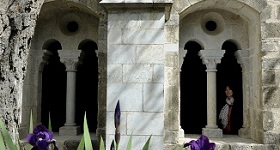 | The monastic history of the site began in the 11th century, when the Bishop of Cavaillon, Ingérand, and his family gave the church of Saint-Perpétue and a large agricultural estate to the powerful Benedictine Abbey of Saint-Victor in Marseille. Thanks to support from other donations, Marseille Abbey quickly established a double monastery there, one for monks based around the church of Sainte-Perpétue which has also remained as the parish church, and a larger one for nuns for whom a second church was constructed: Sainte-Marie, consecrated in 1056. |
 | This monastery, which is referred to as primitive, is not the one that you can admire today. The foundations of the Roman villa were reused for its construction, in particular those of the wine press room which are very strong. It was destroyed in its turn and is only known to us by the remains revealed during archaeological excavations: foundations, but also several walls discovered in 2018 in the west wing. Storeroom arches and wall with small window from the 11th century |
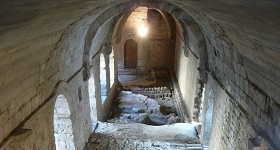 | Other remarkable remains of the primitive monastery were unearthed during successive archaeological excavations; these were linked to the transportation of water, essential for the life of the religious community. Water was collected south of the monastery at the foot of the rocher de Candelon, then channelled to the monastery probably to a pool which allowed pressure to be obtained to supply a water point in the courtyard which was the centrepiece of this circuit: the washbasin. In nunneries, it was generally situated opposite the entrance to the refectory so the nuns could perform their ablutions before and after meals. Archaeological excavations of 2011 in the south walkway |
 | The overflow from the wash basin takes the form of a stone gutter covered with slabs which then crosses the courtyard and feeds into a second water point. The overflow |
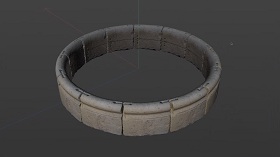 | In 2018, an element of the washbasin was discovered during excavations in the storeroom. This allowed the 11th century wash basin to be reconstructed. The 3D reconstruction |
The second 12th-13th century monastery
The construction of the second monastery began at the end of the 12th century. The trapezoidal monastery with a timber framed roof was replaced with a monastery which appears to have been orthogonal on the initial plan, with a barrel-vaulted stone roof. There are few documents to help us trace the history of its construction, but in this research into the past, archaeology provides us with some precious clues, in particular for retracing the chronology of its construction.
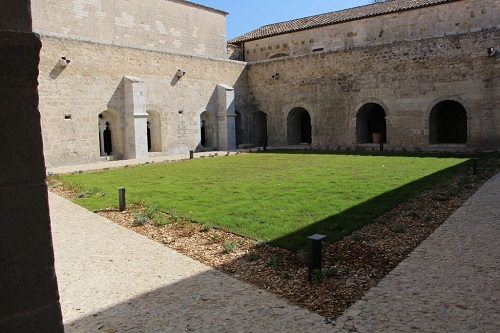 | The buildings are arranged around a courtyard, both a light well, and also a space for meditation. Today this courtyard is “greened” but, until the 14th century, it was a cemetery for the nuns. The “greened” courtyard |
 | The courtyard is enclosed by a cloister consisting of 4 semi-circular vaulted walkways which served all of the conventual rooms. 3 stages of its construction can clearly be distinguished. |
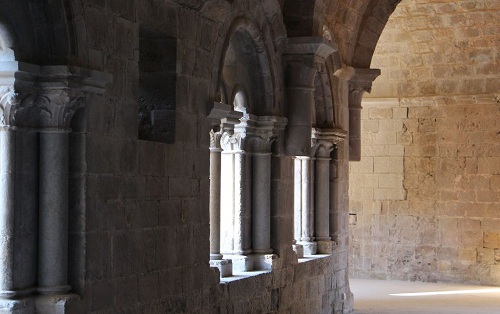 | The north walkway alongside the church was the first to be reconstructed. It is the most decorated with bays with columns decorated with foliage. The church is a perfect example of the Roman Provençal style, consisting of a single nave extending into a half-domed apse. The nuns gathered there for the eight daily offices. The north walkway |
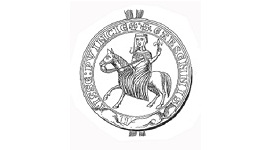 | The second period of construction concerns the east and south walkways which display the same craftsmanship and whose bays are practically identical to those found in the cloister of the Abbaye du Thoronet. These similarities with the Cistercian Abbey are found in the chapter house, where the entrance door, the bays with embrasures and the magnificent cross-ribbed vaulted ceilings descending in the centre onto two squat columns, were obviously built based on the same models by the same builders. The construction period of this room corresponded with the arrival in 1225 at the monastery of a remarkable character, Garsende de Sabran, Countess of Provence and Forcalquier. The substantial donations attracted by her very presence enabled this part of the monastery to be constructed. Garsende’s seal |
 | On the southern side is the refectory where the entire community, made up of 50 nuns, took their meals in silence. An opening in the adjoining kitchen wall allowed dishes to be passed through. Sited on the remains of the press room of the Roman villa, the kitchen was split in two by a wall supported by two arches to separate the cooking area from the meal preparation area. The nuns in the refectory |
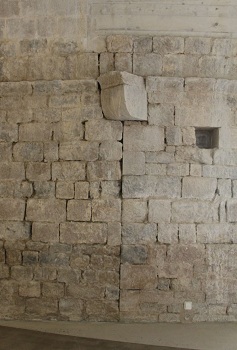 | The last stage of construction concerned the west walkway. Architectural clues prove that it should have been sited at right angles to the south walkway to close the square of the courtyard. But for that, new foundations would have to be built. It is probable that the lack of financial resources led to the reuse of the foundations of the primitive monastery. The corner console |
The 17th century saw a degree of relaxation in the observance of the rule of St Benedict in this religious community, and a partial abandonment of the use of community buildings in favour of individual dwellings within the monastery grounds. In 1660, Mazarin, who at the time was Abbott of Saint-Victor, decided to retaliate by closing the monastic establishment and transferring some of the Benedictine nuns to a convent in Aix-en- Provence. On the death of the last nun to remain on the site in 1692, the monastery was finally abandoned and converted into a farm.
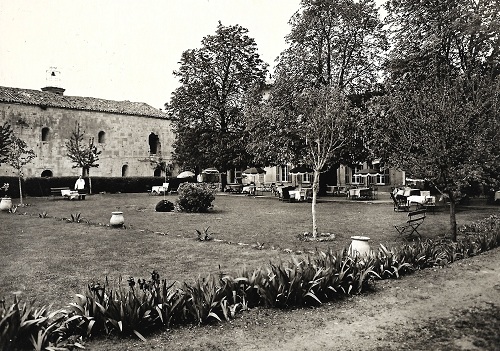 | It remained as such until the French Revolution after which it went through a series of acquisitions, in 1792 first of all as a property of the state, and then in 1938 by the Fournier family to be developed into a luxury hotel. In the 1990 the commune of La Celle exercised its pre-emptive right to acquire the abbey and begin the first restoration work before selling it to the Var Department, which completed its renascence by making it into a heritage site open to the public. Old postcard garden |



